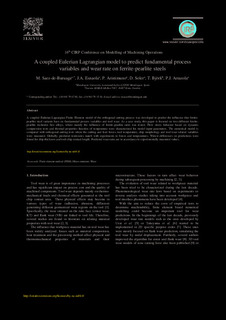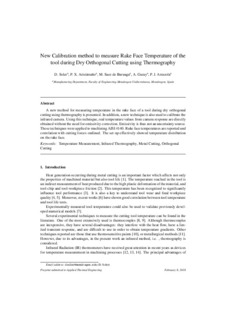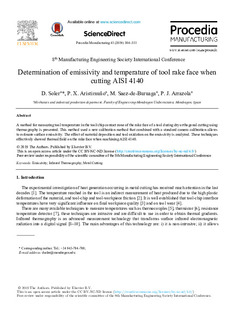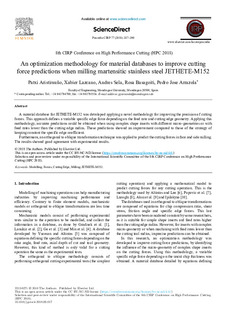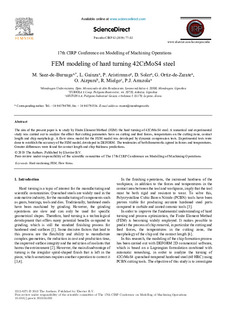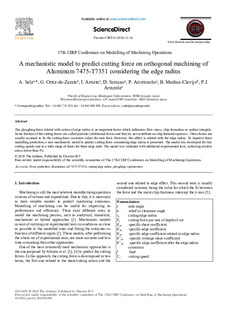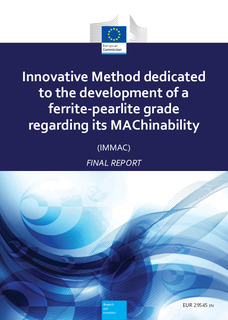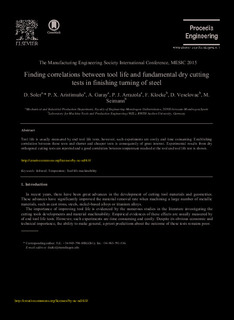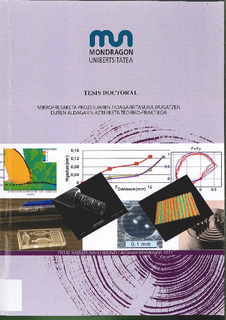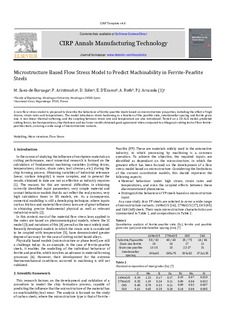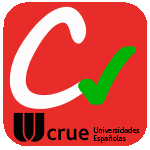24-tik 1-10 emaitza erakusten
A Coupled Eulerian Lagrangian Model to Predict Fundamental Process Variables and Wear Rate on Ferrite-pearlite Steels
(Elsevier B.V., 2017)
A coupled Eulerian-Lagrangian Finite Element model of the orthogonal cutting process was developed to predict the influence that ferritepearlite steel variants have on fundamental process variables and tool wear. As a case ...
New Calibration method to measure Rake Face Temperature of the tool during Dry Orthogonal Cutting using Thermography
(Elsevier Ltd., 2018)
A new method for measuring temperature in the rake face of a tool during dry orthogonal cutting using ther-
mography is presented. In addition, a new technique is also used to calibrate the infrared camera. Using ...
Determination of emissivity and temperature of tool rake face when cutting AISI 4140
(Elsevier B.V., 2019)
A method for measuring tool temperature in the tool/chip contact zone of the rake face of a tool during dry orthogonal cutting using thermography is presented. This method used a new calibration method that combined with ...
An optimization methodology for material databases to improve cutting force predictions when milling martensitic stainless steel JETHETE-M152
(Elsevier Ltd., 2018)
A material database for JETHETE-M152 was developed applying a novel methodology for improving the precision of cutting forces. This approach defines a variable specific edge force depending on the feed rate and cutting ...
FEM modeling of hard turning 42CrMoS4 steel
(Elsevier B.V., 2019)
A mechanistic model to predict cutting force on orthogonal machining of Aluminum 7475-T7351 considering the edge radius
(Elsevier B.V., 2019)
The ploughing force related with action of edge radius is an important factor which influences flow stress, chip formation or surface integrity. Some fraction of the cutting forces are called parasitic (additional) forces ...
Innovative Method dedicated to the development of a ferrite-pearlite grade regarding its MAChinability (IMMAC): final report
(Oficina de Publicaciones de la Unión Europea, 2019)
Ferrite-pearlite (FP) steels are the most common material for engineering and automotive industries (gear box parts, crankshaft, connecting rods, injection parts…). Without any extensive research, considering the different ...
Finding correlations between tool life and fundamental dry cutting tests in finishing turning of steel
(Elsevier, 2015)
Tool life is usually measured by end tool life tests, however, such experiments are costly and time consuming. Establishing correlation between these tests and shorter and cheaper tests is consequently of great interest. ...
Mikrofresaketa prozesuaren fidagarritasuna mugatzen duten aldagaien azterketa teoriko-praktikoa
(Mondragon Unibertsitatea. Goi Eskola Politeknikoa, 2011)
The micromachining process, the same as any other industrial process, must offer high reliability so that it can be integrated in the manufacturing industry. In order to ensure their reliability, machining processes like ...
Microstructure based flow stress model to predict machinability in ferrite–pearlite steels
(Elsevier Ltd., 2019)
A new flow stress model is proposed to describe the behaviour of ferrite–pearlite steels based on microstructure properties, including the effect of high strains, strain rates and temperatures. The model introduces strain ...


